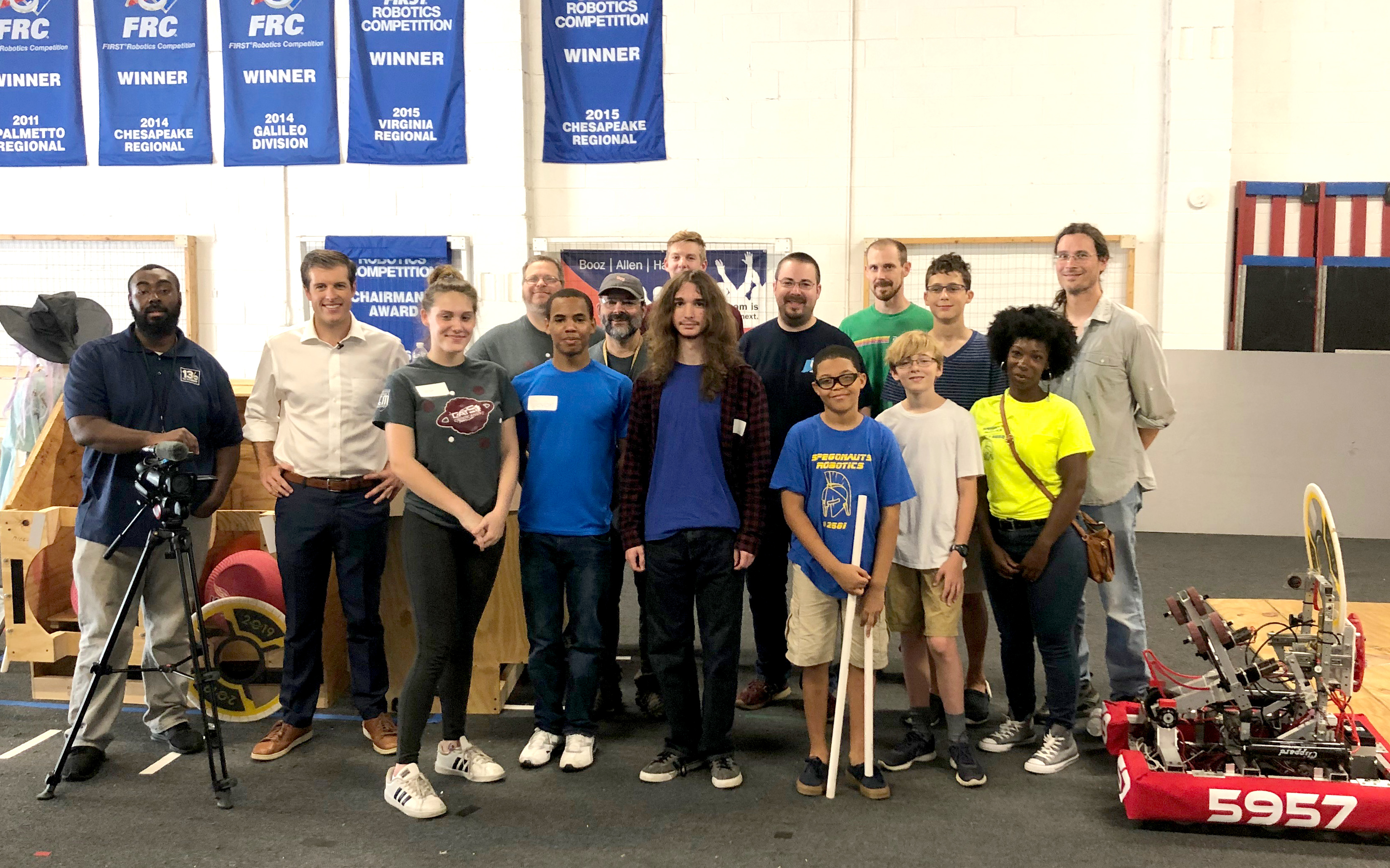
Local robotics team partners with Newport News Police Department for new tactical training operations
NEWPORT NEWS, VA – The sounds of laughter and emphatic robotic whizzing echoed off the high ceilings of a woodworking-shop-turned-robotics-learning-playground, affectionately referred to as the STEM Gym located off of J. Clyde Morris in Newport News, VA. David Lawrence, Hall D staff scientist at the Department of Energy’s Thomas Jefferson National Accelerator Facility, knelt down and helped a student assemble their latest creation, a lightweight robotic prototype designed to aid the Newport News Police Department in tactical training.
The prototype was the brainchild of NNPD Sergeant, Bradley Churchill, who after seeing a robot used for tactical accuracy practice was inspired to bring the same type of training to his department. Churchill reached out to Lawrence, who has volunteered as the robotics coach for the Hines Middle School robotics team, the Spegonauts, for the last eight years. After further discussion, Lawrence and Churchill thought building this type of robot would be a great collaboration opportunity with another local robotics team.
Churchill contacted Olimpia Stein, robotics coach for the Heritage High School team, the CAT-5 Cybercanes, and the three of them began to devise a plan. The CAT-5 Cybercanes would tackle building the base of the robot operated by a remote controller using radiofrequency. The Spegonauts would build the sensor on a mannequin attached to a pole on top of robot.
“As with any first design, we expect to learn a lot by testing it on the range so we can refine and improve the model for the next version,” Lawrence said.
Fellow Jefferson Lab Hall D technician and Spegonauts mentor, Bobby Bunton, designed a sensor that recognized when the mannequin was hit by munitions. After registering impact, the pole attached to the mannequin would drop. When trainees were ready to begin another session, they would reset the robot using a remote controller.
“Partnering with police and Hines [Middle School] allowed us to learn over the summer and work closely with the local community. This was fun and different, because we usually just build robots to compete. It was really cool to build a robot for something like this,” Heritage High School student Sarah Burden said.
The top half of the robotic prototype is intentionally made of inexpensive and replaceable materials for frequent, reusable use. For instance, foam board and copper strips cut by a tool made using a 3-D printer determine when the mannequin is hit. The final model is designed to have heavier motors and armor, ensuring the robots’ durability and longevity by protecting the sensitive parts of the robot.
Churchill originally explored commercial solutions the NNPD could purchase, but all of the potential options were out of budget. He also forecasted that a locally designed and built robot had the added benefit of being maintained and upgraded locally, bypassing any need for shipping time and costs.
“This was an opportunity for both robotics teams to work on something outside of robotics competitions, where there are strict rules surrounding the robot build. This collaboration allowed us to think outside the box and provided us the opportunity to work on a modular project. However, the biggest benefit, of course, is that it helps students get their hands on a real-world application of skills they learned from the robotics team,” Lawrence said.
The Spegonauts team is partially funded by the Jefferson Science Associates Initiatives Fund. The JSA Initiatives Fund Program supports projects, initiatives and activities that further the scientific outreach, and promote the science, education and technology missions of Jefferson Lab in ways that complement its basic and applied research focus.
To view the news coverage by WVEC, click here.
Contact: Rebecca Duckett, Jefferson Lab Communications Office, 757-269-6809, duckett@jlab.org

